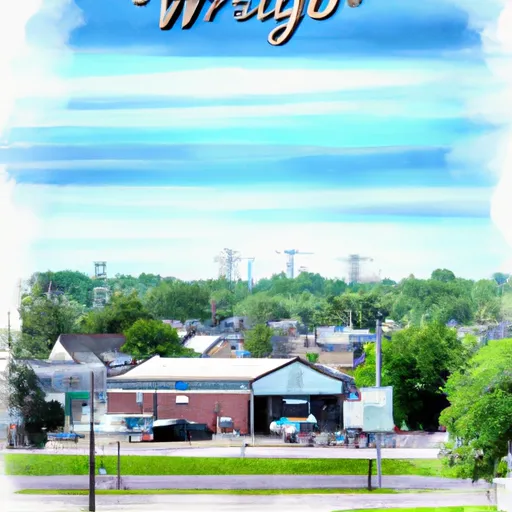-
 Snoflo Premium
Snoflo Premium
Get unlimited access to all our content
With no Ad interruptions! - Start Your Free Trial Login with existing account
Wright
Eden Index
Climate
5.2
•
Recreation
1.7
•
Community
•
Safeguard
2.7/10

Wright, Minnesota is a charming town located in the northwestern part of the state. The climate in Wright is considered continental, with cold winters and mild summers. Average winter temperatures range from 10 to 20 degrees Fahrenheit, while summer temperatures hover around 70 to 80 degrees Fahrenheit. The town experiences moderate precipitation throughout the year, with the majority falling as snow during the winter months.
Wright boasts an abundance of natural beauty, including several lakes and rivers that make up its hydrology constituents. The town is surrounded by numerous lakes, such as Lake Sarah, Lake Independence, and Lake Rebecca, offering residents and visitors ample opportunities for fishing, boating, and water sports. The Crow River also flows through Wright, providing additional recreational activities like kayaking and canoeing.
Outdoor enthusiasts will also find plenty of land-based activities in Wright. The town has several parks and trails for hiking, biking, and wildlife observation. The Lake Rebecca Park Reserve is a popular destination, featuring over 2,000 acres of rolling hills, forests, and prairies.
Overall, Wright, Minnesota offers a picturesque climate, diverse hydrology constituents, and a multitude of outdoor recreational opportunities, making it an ideal destination for nature lovers and adventure seekers alike.
What is the Eden Index?
The Snoflo Eden Index serves as a comprehensive rating system for regions, evaluating their desirability through a holistic assessment of climate health, outdoor recreation opportunities, and natural disaster risk, acknowledging the profound impact of these factors on livability and well-being.
Climate Health Indicator (CHI): 5.2
Wright receives approximately
741mm of rain per year,
with humidity levels near 82%
and air temperatures averaging around
5°C.
Wright has a plant hardyness factor of
3, meaning
plants and agriculture in this region thrive during a short period during spring and early summer. Most
plants will die off during the colder winter months.
By considering the ideal temperature range, reliable water supplies, clean air, and stable seasonal rain or snowpacks, the Climate Health Indicator (CHI) underscores the significance of a healthy climate as the foundation for quality living.
A healthy climate is paramount for ensuring a high quality of life and livability in a region, fostering both physical well-being and environmental harmony. This can be characterized by ideal temperatures, reliable access to water supplies, clean air, and consistent seasonal rain or snowpacks.
Weather Forecast
Streamflow Conditions
Mississippi Headwaters
Area Rivers
Mississippi Headwaters
Snowpack Depths
Mississippi Headwaters
Reservoir Storage Capacity
Mississippi Headwaters
Groundwater Levels
Recreational Opportunity Index (ROI): 1.7
The Recreational Opportunity Index (ROI) recognizes the value of outdoor recreational options, such as parks, hiking trails, camping sites, and fishing spots, while acknowledging that climate plays a pivotal role in ensuring the comfort and consistency of these experiences.
Access to outdoor recreational opportunities, encompassing activities such as parks, hiking, camping, and fishing, is crucial for overall well-being, and the climate plays a pivotal role in enabling and enhancing these experiences, ensuring that individuals can engage in nature-based activities comfortably and consistently.
Camping Areas
| Campground | Campsites | Reservations | Toilets | Showers | Elevation |
|---|---|---|---|---|---|
| Banning State Park | 35 | 1,118 ft | |||
| Woodenfrog - Kabetogama State Forest | 60 | 1,126 ft | |||
| Willow River - Gen Andrews State Forest | 38 | 1,048 ft | |||
| Sandrock Cliffs - St. Croix National Scenic River | None | 891 ft | |||
| Stubler Beach | 8 | 1,511 ft | |||
| McCarthy Beach State Park | 90 | 1,393 ft | |||
| St. Croix - Governor Knowles State Forest | 30 | 814 ft | |||
| Snake River - Chengwatana State Forest | 28 | 828 ft | |||
| Buhl RV Park | 10 | 1,521 ft | |||
| Moose Lake City Park | 82 | 1,053 ft |
Nearby Fishing
Nearby Ski Areas
Catastrophe Safeguard Index (CSI):
The Catastrophe Safeguard Index (CSI) recognizes that natural disaster risk, encompassing floods, fires, hurricanes, and tornadoes, can drastically affect safety and the overall appeal of an area.
The level of natural disaster risk in a region significantly affects safety and the overall livability, with climate change amplifying these risks by potentially increasing the frequency and intensity of events like floods, fires, hurricanes, and tornadoes, thereby posing substantial challenges to community resilience and well-being.
Community Resilience Indicator (CRI):
The Community Resilience Indicator (CRI) recognizes that education, healthcare, and socioeconomics are crucial to the well-being of a region. The CRI acknowledges the profound impact of these elements on residents' overall quality of life. By evaluating educational resources, healthcare accessibility, and economic inclusivity, the index captures the essential aspects that contribute to a thriving community, fostering resident satisfaction, equity, and social cohesion.

